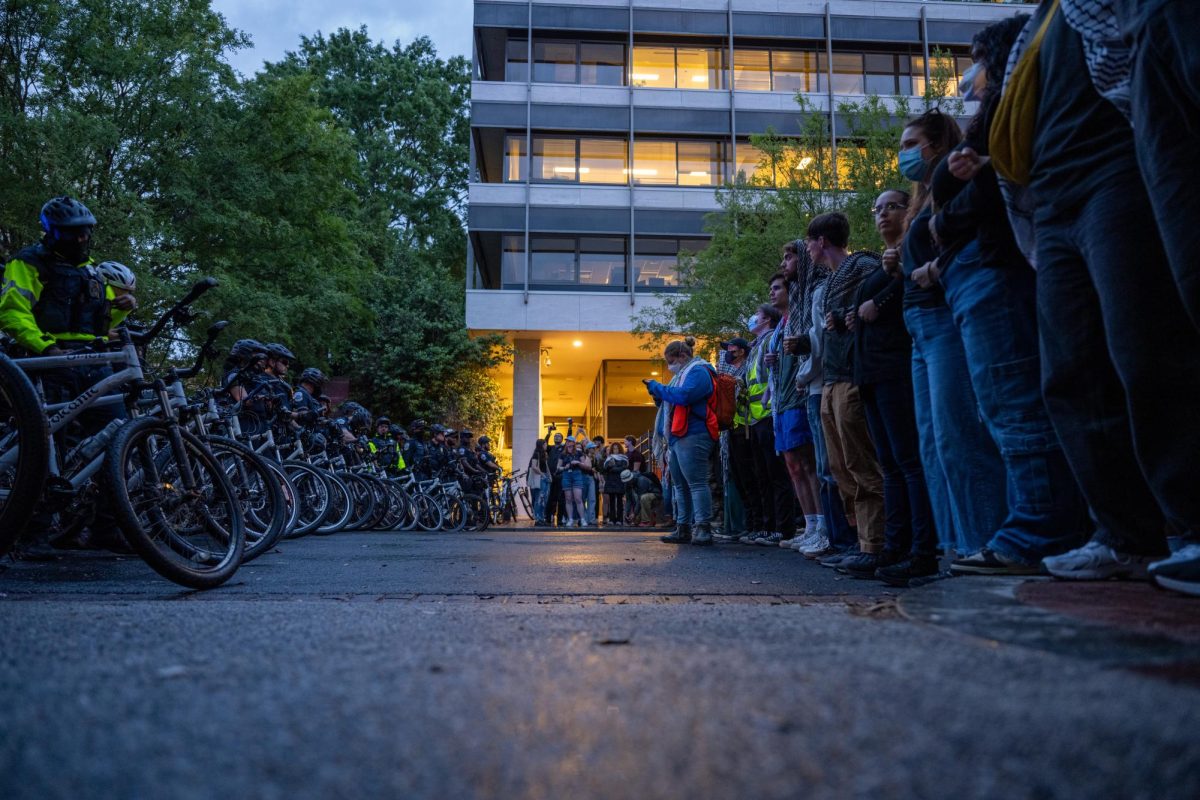Looking for cheap train tickets? Us too. With Thanksgiving coming up, the pair of us have been hit hard by the Amtrak website, where we’ve found nothing but three digits where there used to be two. A trip that cost Katarina $60 only a year ago is now upward of $260 — one way.
With limited alternative options, Katarina is forced to fly home for break — a journey of hours of waiting in security lines at overcrowded airports, about 40 minutes of air time and excessive carbon emissions. Around campus, the same story is reverberating from fellow Northeasterners. How can it be cheaper to fly than it is to take the train?
The dramatic price hikes of Amtrak tickets are just the latest symptom of the larger institutional and cultural neglect of public transportation in the United States. In September of this year, the House Appropriations Committee proposed a 92 percent funding cut to Amtrak’s Northeast Corridor — its most heavily trafficked route. This translates to fewer trains, more delays, higher costs for riders and little hope for improving our already dilapidated railway infrastructure.
This is just one element of a proposed 64 percent overall Amtrak funding cut from the 2023 fiscal year and is the latest attack on public transportation in the United States. The burden of these cuts falls on all Americans, not just broke college students. Public transport is energy-efficient, produces jobs, reduces road congestion, decreases greenhouse gas emissions and has the potential to improve mobility for millions of people.
Compared to other Western industrialized countries, the U.S. public transit system is about as efficient as the horse and buggy. Europe’s highly developed public railway system makes traveling across the continent seamless — a huge advantage not only for its inhabitants but also for the region’s economies. The U.S. has a duty to its citizens to follow suit — there’s no shame in imitating our friends across the pond.
Fortunately, improving public transit is gaining traction with the Biden administration. On Nov. 6, the administration announced that Amtrak will receive nearly $10 billion in Federal Railroad Administration funding to modernize and improve infrastructure and stations. The funding is set to replace aging tunnels, bridges and tracks while also enhancing the safety, reliability and speed of the busiest passenger railroad in the U.S. This means easier ground travel for millions of people.
Although a positive step, increased federal funding alone is not sufficient. Distaste for public transportation is as deeply rooted a sentiment in the U.S. as religious freedom or reverence for synthetic cheese. This needs to change, and the only way to do it is collectively.
Nearly 92 percent of U.S. households own at least one vehicle, yet less than 92 percent of Americans are food secure or literate. Prioritizing the development of public transportation is not only the job of elected representatives but also that of everyday citizens.
The U.S. is vast, and its economically vigorous regions must be connected more efficiently if the country is to remain competitive internationally. Every $1 invested in high-speed rail creates $4 in economic benefits. A high-speed transcontinental rail system will not only connect major economic hubs across the country but also boost economic activity through corridors of travel.
Although variations exist, an average journey by train emits half as much CO2 as a journey by plane. As for cars, road users account for about 71 percent of transport CO2 emissions worldwide. Getting cars off the road and people into trains would substantially reduce pollution and pave the way — rather, lay the tracks — for a greener future.
But getting cars off the road is easier said than done. The car has become the symbol of freedom in America. They are private, gas-powered and the ultimate manifestation of individuality — the bedrock of American culture. But the truth is, cars are the opposite of liberating. It wasn’t until Katarina’s family abandoned a Nissan Rogue and moved from the suburbs of Long Island to Brooklyn about three years ago, that Katarina truly experienced mobility.
Relocating to a city with a well-developed, sufficiently maintained and expansive subway system dramatically improved the quality of Katarina’s life. Having access to a high-speed rail system allows Katarina to work three boroughs away — a journey that would take at least triple the amount of time by car — and go anywhere in the city for $2.90.
Valuing a forward-thinking, greener, more internationally competitive society means investing in and developing public transportation. By changing the way we think about commuting and urging our elected officials to invest in a more efficiently traversed United States, a more mobile future is in our grasp.
Katarina Engst and David Lawrence, juniors majoring in political science, are opinions writers.


